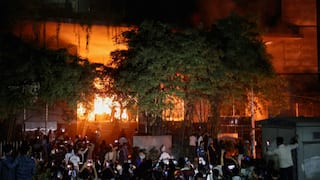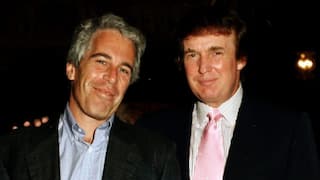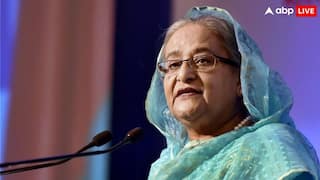The Return Of Taliban And The Arrogance Of Empire

It is less than three days ago that American newspapers, in their coverage of rapidly developing events in Afghanistan, cited ‘experts’ in American foreign policy as being of the opinion that Kabul was not likely to be breached by the Taliban before 30 days. Six days ago, an analysis by the US military suggested that the fall of Kabul could take place in 90 days; and in June American analysts had forecast a collapse of the government led by Ashraf Ghani in 6-12 months if the US adhered to its plan to withdraw its forces. Many of these experts and other public commentators would have sensed over the course of the last few weeks as the Taliban overran one city after another that something was amiss in American military intelligence and the assessments of the State Department. What is most striking is that at a White House press conference on July 8, Biden was unequivocal in the affirmation of his view that the US in withdrawing from Afghanistan was not handing over the country to the Taliban:
Q. Mr. President — do you trust the Taliban, Mr. President?
Q. Is a Taliban takeover of Afghanistan now inevitable?
THE PRESIDENT: No, it is not.
Q. Why?
THE PRESIDENT: Because you — the Afghan troops have 300,000 well-equipped — as well-equipped as any army in the world — and an air force against something like 75,000 Taliban. It is not inevitable.
This is far from being the first time that American military analysts, policy wonks, and the myriad number of ‘experts’ have proven to be wholly inept. The ‘mother of all terrorist attacks’, as Saddam Hussein might have said, though he had no hand in that affair, was the September 11 bombings of the World Trade Center and the Pentagon which caught Americans wholly unaware and to revenge which the Americans launched an attack of Afghanistan where the mastermind of the bombings, Osama bin Laden, was believed to be sheltering. Then President Bush declared that the United States would go to the ends of the earth to bring the perpetrators of the terrorist attack to justice and American troops would smoke them out of caves if necessary. Vengeance may not be the way of Jesus, but it is nevertheless biblical; and though pious words and phrases such as ‘justice’, ‘human rights’, the ‘scourge of terrorism’, and the assault on the integrity of the ‘international community’ were mentioned as inspiring the US to wage war on Afghanistan, there was never any doubt that the US was thirsting for blood. The US mainland had not been attacked since British troops burnt much of Washington DC to the ground in 1812 and it must have been particularly grating for the Americans that they had survived the cold war, outspent the Soviets and brought down the Soviet empire, but were outdone by a bunch of Islamic terrorists who had then gone into hiding in a country that more than one American commentator has described as the home of ‘primitive’ people.
One year into the US attack on Afghanistan in 2001, bin Laden was known to have made his way out of Afghanistan to some other country—eventually, more than a decade later, identified as Pakistan. Biden has now denied that the US had any set for itself any mission, as he put it in his address yesterday morning (August 16), to create the conditions that would facilitate Afghanistan’s transition to a ‘unified centralized democracy’, and he has similarly said that ‘our mission in Afghanistan was never nation-building.’ This retrospective justification of the decision to pull out of Afghanistan is simultaneously correct and incorrect. On the one hand, much as Biden may deny it, nation-building was undoubtedly the rhetoric that informed the decision of one American administration after another to keep troops despite the escalating costs of a quasi-American occupation. The core mission of the US in Afghanistan, the first Obama administration declared in opposition to the Bush administration’s design of attempting a vast project of nation-building, was ‘to disrupt, dismantle, and defeat al Qaeda in Pakistan and Afghanistan, and to prevent their return to either country in the future’, but at the same time it was understood that this objective could only be achieved by introducing democracy in Afghanistan in at least some rudimentary form. Thus, in this respect, Biden’s statement yesterday is not merely incorrect, but suggests rather an elementary failure to recognize, or perhaps acknowledge, that the ‘core mission’ as set out by Obama cannot be disentangled from the introduction of democratic reforms and what is called nation-building.
In seeking to understand some though not all dimensions of the extraordinary return of the Taliban to power after two decades, we can attempt to identify some elements of the present discourse around Afghanistan that are now, and will remain, of critical importance—not just for the people of Afghanistan but for the rest of the world. Twenty years ago, writing an article called ‘Terrorism, Inc.: The Family of Fundamentalisms’, for the now-defunct The Little Magazine (September-October 2001 issue), I suggested that Americans had been ‘warned that Afghanistan has never been conquered in the last millennium and that it will be their graveyard: the British were unable to subdue the Afghans, the Soviets got quagmired in that hostile terrain, and it is the fate of each superpower to be humbled by the intractable Afghans.’ It may be a cliché to speak of Afghanistan as ‘the graveyard of empires’, certainly modern empires, but the Taliban themselves have declared that their victory shows the resolve of the Afghans to never be governed by foreigners. One might think that for this reason alone the Americans, who are prone to speak with pride of their own past as one shaped by the ardent desire for self-determination, might find common cause with the Taliban. Somehow, such a sentiment has never entered into American calculations and never became part of the American discourse on Afghanistan, not even in those very limited circles that are highly critical of US foreign policy.
Just how the Taliban were able to run the opposition into the ground and make the government fall in a matter of days cannot of course be accounted for only by the notion that the American enterprise was doomed to failure from the outset since the Afghans will never tolerate foreigners as occupiers in their midst. There are many considerations at work here. In my last essay, I wrote about the Taliban as non-state actors, but we can at this juncture profitably invoke the brilliant work of the anthropologist James Scott who drew a distinction between state and non-state spaces. The fact of the matter is that the reach of the state in Afghanistan is always very limited and American boots on the ground for twenty years did not change that. There are large tracts of the country where the state has no reach and is all but invisible. The terrain is rugged, uncharted, hostile, and impervious to the penetration that technologies of the state have achieved elsewhere. There are many consequences that follow, among them that the Taliban, who knew the terrain and could count on the hospitality—a key ethic among the Afghans, and one that Americans scarcely recognized—of local people, always had places where they could seek refuge. But there are denser philosophical and psychological implications of the idea behind non-state spaces, the gist of which is that non-state spaces defy the logic of the master and make incapable the mastery that Americans have long assumed comes with technologies of the state.
Secondly, and relatedly, the so-called failure of the Afghan security forces must be scrutinized in a wholly different language than that made familiar to us from all of contemporary political discourse, whether form the right, center, or left. Nearly everyone is puzzled by how the Afghan security forces crumbled like tenpins in a bowling alley. US Secretary of State Antony Blinken has spoken repeatedly of ‘the inability of Afghan security forces to defend their country’ and Biden likewise stated with some weariness that the Afghan military gave up easily, ‘sometimes without fighting’. The Taliban is not one group and there is no entirely reliable account of their numbers, but the most generous estimates place their strength at no more than 150,000. The Afghan security forces, in contrast, numbered over 300,000, and over the years billions of dollars have been spent on ‘training’ them. Yet, it is reliably reported that in most cities little or no opposition was offered to the Taliban and when their fighters entered Kabul through its four main gates they were not met with any resistance. Much before entering Kabul, or cities such as Kandahar, Mazar-e-Sharif, and Jalalabad—which they walked into without any shots being fired practically hours before making their way to the capital—as well as smaller towns, the Taliban are said to have struck deals with local elders and security forces. Not only were the Taliban able to make inroads with little or no fighting but often arms were surrendered without resistance and the Taliban came into the possession of a large arsenal of armored vehicles, arms, ammunition, grenades, mortar, artillery, night sights, and rocket launchers—and now, after the capitulation of the Afghan security forces, tanks and over 200 fighter jets and choppers. Some have sought to explain their conduct by pointing to the corruption endemic in the security forces; others have pointed to the indiscipline within the security forces or argued that Afghans in uniform feared for their lives and chose the easier option of surrendering without a fight.
Some of these arguments are merely lazy and rehearse worn-out ideas about the endemic corruption of the ‘native’. To understand corruption, one must turn to the machinations of the Trump White House and the nauseous shenanigans of the oligarchy in the US—but that is another subject. None of the arguments about how the Afghan security forces virtually disappeared can be reconciled easily with the long-standing image of the Pathan and the Afghan more generally as an indomitable fighter who cannot be separated from his rifle. But just what does it mean to have ‘trained’ Afghan men? An average American soldier carries 27 pounds of gear and a few carry as much as 70 pounds; the Afghan fighter, by contrast, sports a rifle and some rounds of ammunition. When you put the Afghan fighter and the American soldier side-by-side, the latter looks ridiculous—much as the American policeman often looks puffed up, overburdened, and something akin to a sack of potatoes in comparison with the English bobby. There is some arrogance in supposing that men—even ‘civilians’, though it must be noted that there is no easy distinction in Afghanistan between ‘civilians’ and the ‘Taliban’—born into a culture of the rifle, wholly familiar with the terrain, and habituated to different notions of kinship can just be ‘trained’ into becoming ‘soldiers’ of the type familiar to us from a modern army. It is the Americans, on the contrary, that should have been receiving training: barely any American soldiers or even commanding officers and generals know any of the languages spoken in Afghanistan and the history of the country is wholly foreign to them. The American soldier, not surprisingly, reflects the general indifference of the US to most parts of the world, as well as what we can call the technological fallacy—the hubris of supposing that technology can overcome all shortcomings.
I have already suggested that whatever the differences among the Afghans, and the hostilities between ethnic groups, Americans were clearly seen as foreigners and as members of an occupying force. While I have suggested that the Taliban may have forged links with local communities, the Afghans have a history of resistance to centralized state authority and to that extent, there is no doubt that there will continue to be resistance to the Taliban as they once again take over the functions of a ‘state’. It would be difficult to overstate the sheer indifference with which most Afghans evidently treated the notion of Americans as liberators. Many will dispute this characterization, pointing especially to their role, as the Americans themselves fondly imagined, of freeing Afghan women and girls from the shackles of drudgery, sexual abuse, illiteracy, and servitude. The question of gender, the Taliban, and the American occupation and mission in Afghanistan is critically important and I will take it up in the following essay as it is deserving of lengthier treatment. For the present, however, the resurgence and return of the Taliban poses difficult questions not only for those who seek to promote democracy around the world and are enamored of the idea that ‘democracy’ is the culmination (or nearly so) of the human aspiration for freedom but even for those who live in those countries which are generally seen as established democracies. The unpleasant truth is that democracies are under severe, indeed unprecedented, stress everywhere in the world. The US presents perhaps the starkest example of the peril to established democracies, given that many Republicans are, by every measure, the Taliban of their own country. The world will now have to ponder whether the fall of Afghanistan to the Taliban is not in fact an ominous portent of the impending demise worldwide of the short-lived idea of democracy.
(Vinay Lal is a writer, blogger, cultural critic, and Professor of History at UCLA)
[Disclaimer: The opinions, beliefs, and views expressed by the various authors and forum participants on this website are personal and do not reflect the opinions, beliefs, and views of ABP News Network Pvt Ltd.]


























